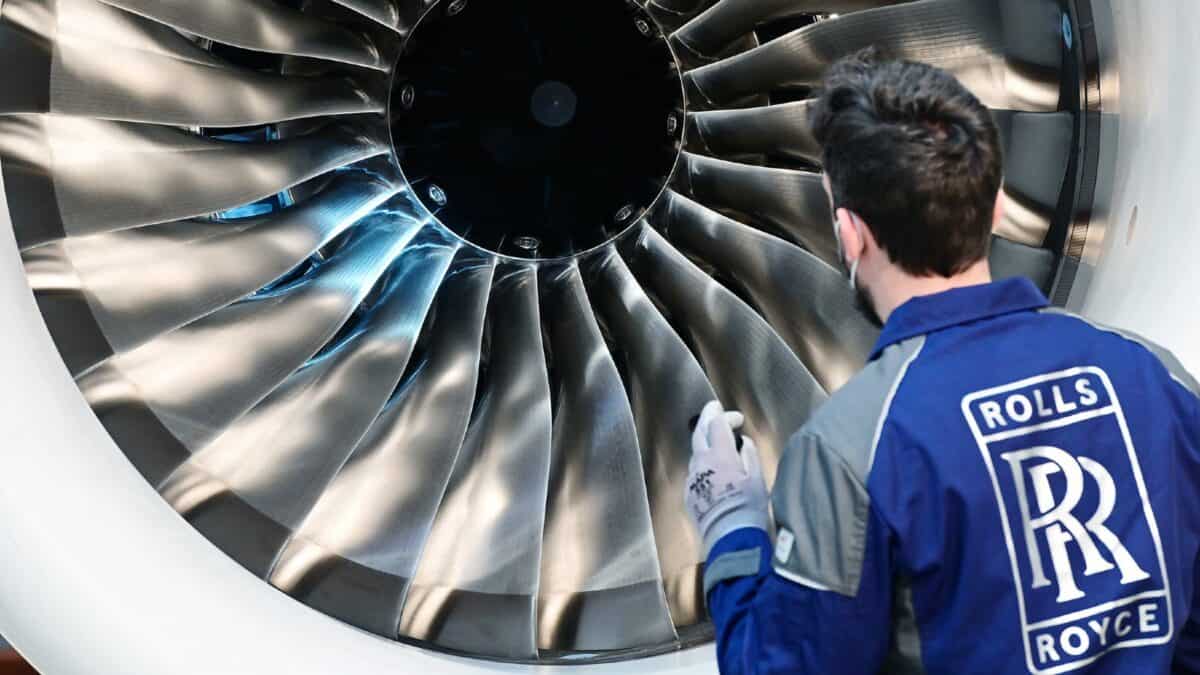
Image source: Rolls-Royce plc
It has been an incredible couple of years for shareholders in aeronautical engineer Rolls-Royce (LSE: RR). Rolls-Royce shares recently hit an all-time high not far off £6 apiece.
Given that they were selling for pennies just two years ago, that represents a remarkable return for some investors.
With that sort of momentum, it is easy to imagine that Rolls-Royce shares may continue heading upwards. But while momentum can be a driver in the stock market as some investors pile in to a surging share, over the long term, valuation tends to be based on more hard-headed financial analysis.
So, what are Rolls-Royce shares really worth?
Looking at the P/E ratio
Last year, the company reported basic earnings per share of 28.9p.
Using a price-to-earnings (P/E) ratio of 17 (roughly the current FTSE 100 average), that would mean the shares are worth £4.91 apiece.
US rivals trade on higher P/E ratios. RTX is at 35, for example, while General Electric has a P/E ratio of 35. Those sort of multiples could suggest that Rolls-Royce shares have a fair value of over £9. That could mean a rise of over 50% from today’s price.
But one issue with this methodology is that US shares tend to have higher valuations than their London counterparts. Rolls is listed on the London exchange and I do not expect the strategically important UK manufacturer to move its listing.
Potential for higher earnings
Still, the P/E ratio is based on the company’s current earnings. It means that, if earnings look set to grow, that could justify a higher share price. Conversely, if they look set to fall, the share price may be seen as overvalued and so could be set for a tumble.
The company has set ambitious medium-term targets, which explain some of the investor enthusiasm for Rolls-Royce over the past year. These involve underlying operating profit, operating margin, free cash flow and return on capital.
However, basic earnings per share are not among the targets. That said, if the company is able to push up underlying operating profit and free cash flow, I see that as likely a positive indicator for basic EPS.
Room for further share price growth
On that basis, if Rolls-Royce is able to deliver on its medium-term targets, then I see a fair price for the shares as higher than it is now. How much higher depends on just how good those earnings turn out to be.
Given that upbeat outlook, why am I not buying the company for my portfolio?
In short, I do not think the potential risks are factored in properly even at the current price. There is a risk that the company will not deliver on its targets for reasons of its own making. It has historically been an inconsistently performing business and the current targets are ambitious.
But I am also concerned about the business being hurt by factors largely outside its control, such as a slowdown in civil aviation demand due to anything from a recession to a pandemic. That has historically happened from time to time – and I expect it to occur again at some point in the future.













